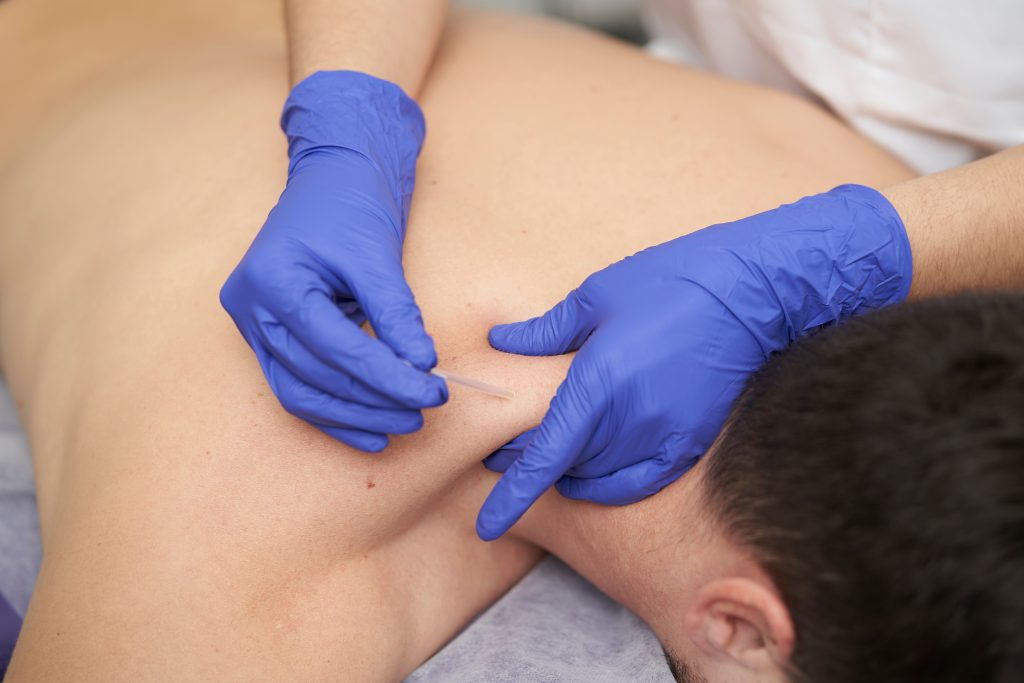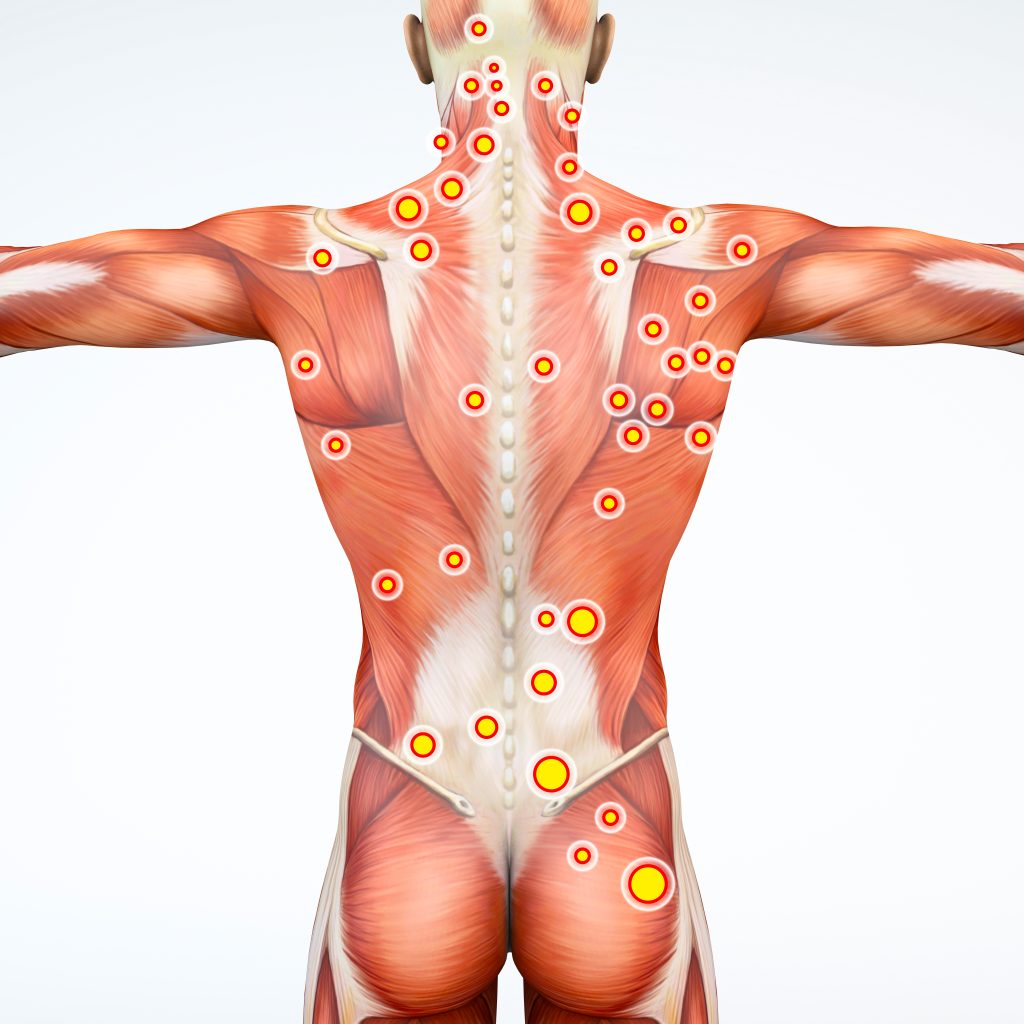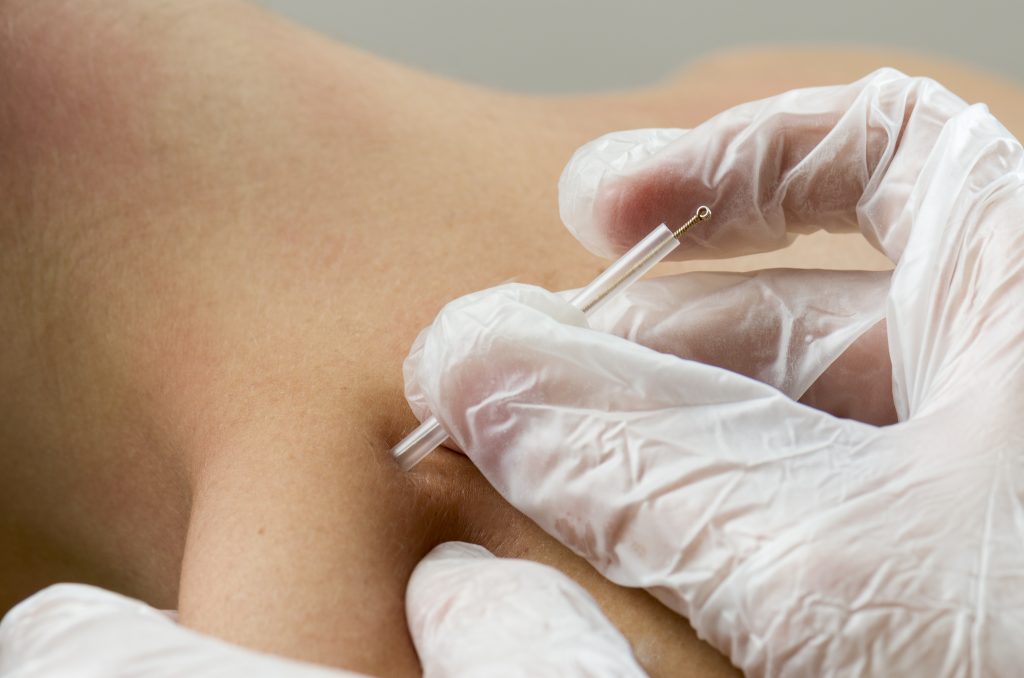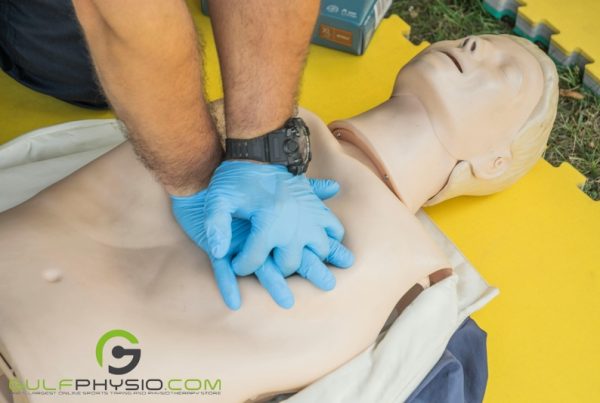
Dry needling is a technique for treating pain and movement limitations. Where permitted by state legislation to treat myofascial pain. It includes putting a “dry” needle, one without medication or injection, into sections of the muscle.
What is dry needling?
This method is also known as trigger point dry needling or myofascial trigger point dry needling. Dry needling is a treatment administered by professional physical therapists. They have specialized knowledge and training in the technique. Myofascial is composed of the roots “myo” (which alludes to muscle) and “fascia” (which refers to the tissue that connects muscle).
What is a trigger point?

Trigger points are small areas of muscle that become hypersensitive due to continued tension on the muscle. Also known as “contraction knots,” they can be found in muscles all over the body. They can occur in any muscle but most often occur in the neck, back, shoulders, buttocks, and thighs.
What needles are used?
In dry needling, the needle is extremely thin and slender. After entering the skin, the needle stimulates the muscles, connective tissue, and myofascial trigger points beneath the surface. With the needle, a PT may reach deeper into a patient’s tissue than their hands alone can. When performing, a physical therapist will always take precautions by using gloves and other safety gear. Used sterile needles go in a sharps container for medical use.

Benefits
Some cases of muscle soreness and stiffness could benefit from dry needling. Taking pressure off the trigger points may also make you more flexible and increase your range of motion.
Side-effects of dry needling
Most people will respond well to treatment. However, some may experience temporary, mild side effects with dry needling. Serious side effects, however, are rare.
- Fatigue and drowsiness are possible side effects. If this occurs, it is encouraged to have a snack or drink some water.
- Short-term soreness and discomfort should last only 12-24 hours.
- It’s also possible to have minor bruising or bleeding near the injection site. The use of an ice pack following the procedure can help you recover.
Is it safe?
Yes, as long as the therapist performing the dry needling is knowledgeable about the potential risks and how to avoid them. The therapist will review your medical record and ensure that the procedure is safe for you. You will have to consent before the treatment, and if you’re not comfortable, you can always decline.
Who is not eligible?
Generally, pregnant women should avoid this treatment as a rule. Patients on blood-thinning medications or those recovering from surgery should talk to their doctor. Those with a fear of needles are vulnerable to experiencing anxiety. If you have an infection, you shouldn’t have dry needling until the infection is completely gone.
Common conditions
- Disc Problems
- Migraine, cervical headaches, or tension-like headaches
- Joint Problems
- Tendinitis
- Pelvic and hip pain
- Jaw problems and TMJ disorders
- Whiplash and Neck Pain
- Post-Herpetic Neuralgia
- Carpal Tunnel Syndrome and Repetitive Motion Disorders
- Back and spinal problems
- Night cramps and muscle spasms
- Phantom Pain
- Shoulder problems
- Knee conditions
Post-treatment procedure
After treatment, replenish lost fluids by drinking enough water. Your healthcare provider may suggest rest, heat or ice therapy. A warm bath with Epsom salts, or other at-home therapies can also help. These recommendations are advised if you have muscle discomfort in the hours following a treatment session.
Contact emergency services if you have trouble breathing or excessive bleeding. Even though it seldom happens, it could indicate an infection or organ damage from a puncture.
Where to get dry needling services?
Clinics and professionals offering dry needling are rising. Finding places to get treated will not be hard. When looking for this service, ensure that you are doing it at a certified clinic. And that accredited therapists do the procedure.
A Note From Gulf Physio
We hope you’ve enjoyed learning about the subject matter above. This blog post is not a substitute for medical advice. The author cannot guarantee the accuracy of the information presented. If you have any questions or concerns, please consult a healthcare professional. All decisions and actions you make are your own. No one involved in making this resource is liable for its use.


